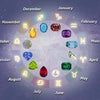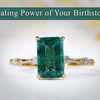
Benefits of the Opal Gemstone: Unveiling Its Unique Advantages
Opals are treasured for their captivating array of colors and the unique way they interact with light. As a seasoned gemstone enthusiast, I've observed the many facets that make opals stand out in the world of precious stones. Each opal gemstone is one-of-a-kind, marked by a distinct play-of-color — a phenomenon caused by the internal structure of the stone that can display a spectrum of hues as it catches the light. Beyond their visual appeal, opals are believed to encompass a wealth of benefits, ranging from aesthetic to metaphysical.
Historically, opals have held a spot in various cultural lore as symbols of hope, purity, and truth. Their extensive range in type and color means there is an opal to suit a range of tastes and preferences, from the fiery shades of the Australian opal to the delicate green hues found in Ethiopian opal specimens. Whether set in jewelry or kept in their natural form as collector's items, these gemstones carry with them a legacy of allure and fascination.
Engagement with opals extends beyond adornment; they often play a role in the narratives of those who wear them. Some believe in the opal's power to enhance confidence, creativity, and spontaneity. While I approach these claims with the understanding that each person's experience is subjective, the persistent popularity of opals in various cultures suggests a deeper collective affinity for this versatile gemstone.
Historical Significance
The vibrancy of opal gemstones is not only an allure in contemporary jewelry but also a beacon of the past, illuminating a rich tapestry of cultural and historical narratives. The celebrated legacy of opals stretches back to ancient civilizations, revered by both Greeks and Romans as a symbol of fortune and prophecy. My exploration reveals how its significance is deeply rooted in history and culture, particularly within ancient societies and Australian heritage.
Cultural Perspectives
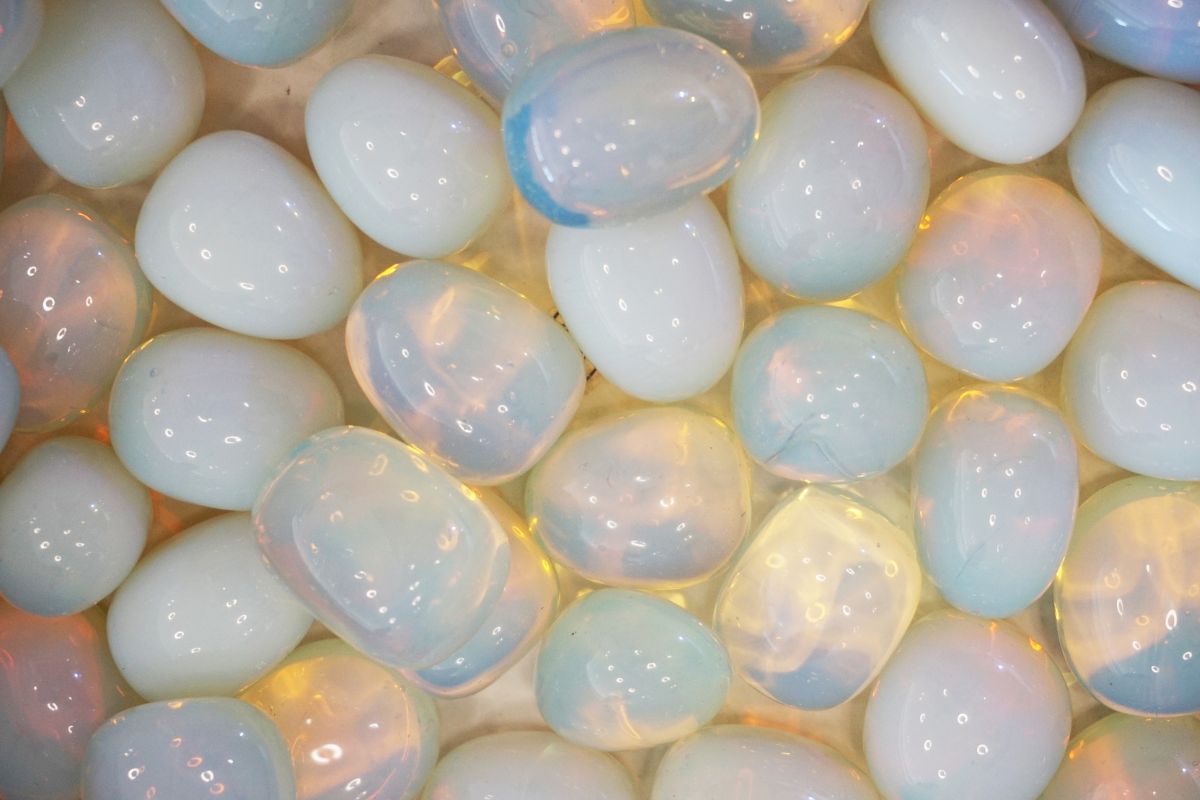
- Greek: To the ancient Greeks, opal was a powerful talisman, believed to provide the gift of prophecy and protection from disease. Philosophers like Pliny the Elder extolled the gemstone's beauty and ethereal qualities.
- Roman: In Roman culture, opal held the esteem equivalent to that of a precious gem. Esteemed Roman senator Nonius chose exile over surrendering an opal ring to Mark Antony. The Romans also considered opal a symbol of hope and purity.
- Australia: Fast forward to the 19th century, and Australia's discovery of opal fields redefined the gem’s prominence. The country became synonymous with opals, now accounting for a significant portion of the world’s supply. Opals' perceived value and beauty grew immensely, cementing its place in the gem market and Australian culture.
Historical Use by Ancient Civilizations
- Use and Trade: My research highlights that ancient civilizations not only cherished opals for their aesthetic appeal but also traded them across continents. The Romans acquired opals from far-flung regions where the gemstones were as prized as diamonds or pearls.
- Symbolism and Lore: Opals served as symbols of fidelity and assurance, and there were beliefs that the stone was infused with the energy and essence of all colored stones.
The intersection of opal's historical prominence with its cultural infatuation showcases a gem that has transcended mere ornamentation. My findings confirm that its allure and significance are firmly rooted in the annals of history, cherished and sought-after from ancient times to modern days.
Formation and Types
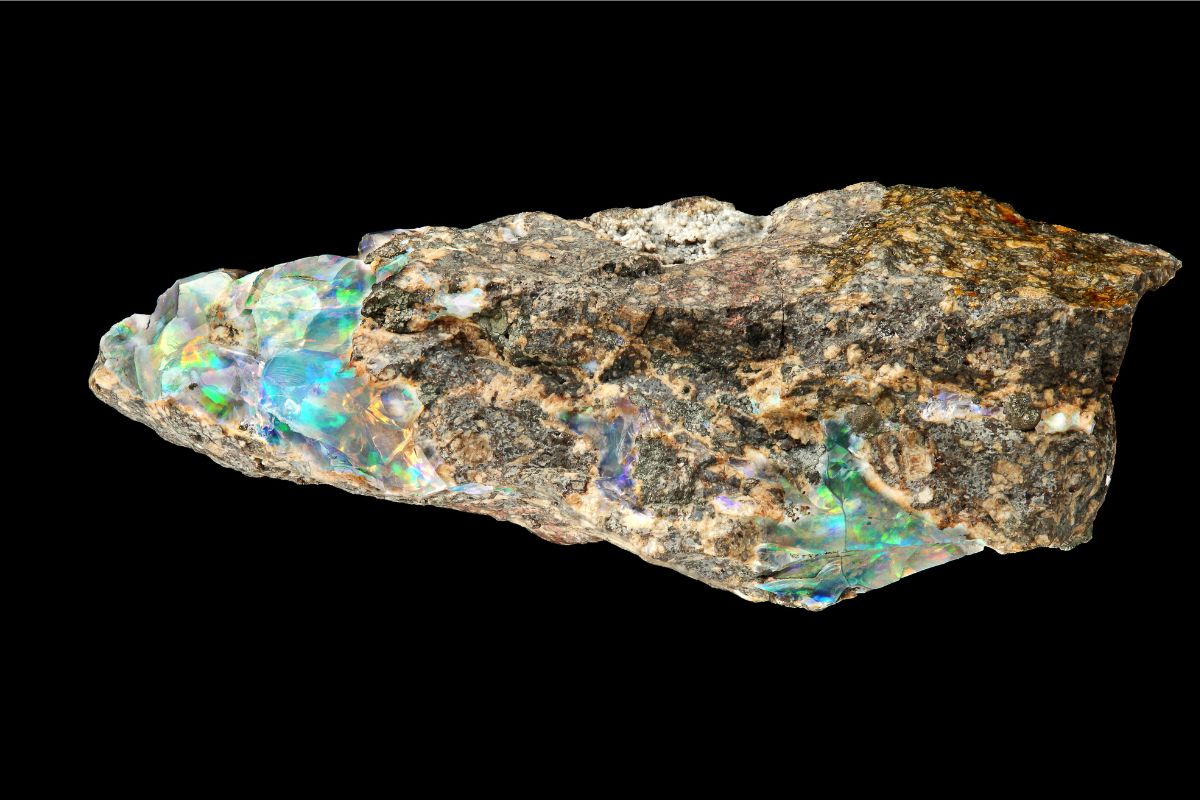
Opals are fascinating gemstones with a unique formation process and a variety of types each possessing distinct characteristics. Here’s an insight into how these stones come to life and the different kinds you might encounter.
Formation Process
Opals form from a solution of silicon dioxide and water. As water runs down through the earth, it picks up silica from sandstone, and then deposits them into cracks and voids. Over time, the water evaporates, leaving behind a silica deposit. This process of formation can take over millions of years, resulting in the opal's unique play of color.
Types of Opal
Opals are primarily distinguished between precious and common opals, with precious opals displaying a play-of-color and common opals lacking this characteristic. The structure of opals is defined by the regularity of the silica spheres within their composition, which causes light diffraction and the stone's signature iridescence.
Common Varieties of Opal
- Black Opal: This type is characterized by a dark body color ranging from grey to black and is renowned for its vibrant spectrum of color. Black opal is considered the most valuable and sought after.
- White Opal: With a light body color, white opals show color play against a translucent to semi-translucent background.
- Fire Opal: Known for its warm body colors in yellow to red tones, fire opals may or may not exhibit color play.
- Boulder Opal: These opals are part of the ironstone boulder and are distinguished by their thin layer of opal, often with a dark body color that enhances color play.
- Crystal Opal: Transparent to semi-transparent, with a clear background that shows an exceptional play of color.
- Common Opal: Also known as 'potch', lacks the color play and is typically opaque, coming in a variety of body colors.
Additionally, there are opals named after their predominant color, such as blue opal and green opal, adding to the opal's allure with their distinct hues.
Physical and Optical Properties
Physical Properties:
- Hardness: 5.5-6.5 on the Mohs scale
- Specific Gravity: 1.98-2.20
- Fracture: Conchoidal
- Cleavage: None
- Luster: Vitreous to resinous
Optical Properties:
- Refractive Index: 1.450-1.470
- Birefringence: None
- Dispersion: None
- Color: Variable, often iridescent
- Transparency: Transparent to opaque
In examining the benefits of opals, I find it essential to explore their unique physical and optical properties. These characteristics not only define the quality of the gemstone but also contribute to its aesthetic appeal.
Color and Appearance
Opals showcase a captivating range of colors. I observe that they can be transparent, translucent, or opaque, with colors that span the entire spectrum. I note that their base color can dramatically impact their value, and the presence of certain hues, such as red against black, can be particularly prized.
Play-of-Color Phenomenon
The play-of-color is perhaps the most enthralling feature I discuss regarding opals. This optical effect results from the diffraction of light, creating flashes of iridescent color that change with the angle of observation. Patterns such as broad flashes, pinfire, and harlequin are among the types I distinguish, and the vibrancy of play-of-color is a key factor in the gemstone's allure.
Measuring Hardness and Clarity
I measure the hardness of opals on the Mohs scale, where they fall between 5.5 and 6.5. This factor reflects their wearability and resistance to scratches. Meanwhile, clarity in opals crucially influences their quality; from crystal clear stones to those exhibiting natural inclusions, each specimen exhibits its own charm.
Metaphysical and Healing Properties

Opal gemstones are revered not only for their beauty but also for their potent metaphysical and healing properties. I find that these stones resonate with numerous aspects of our emotional and spiritual well-being, as well as providing multiple physical health benefits.
Emotional and Spiritual Benefits
Metaphysical Specifications:
- Protection from negative energies
- Enhancement of inspiration and creativity
- Promotion of emotional balance and healing
Personal Experience: I've observed that wearing an opal can be particularly nurturing, providing comfort and support while fostering self-worth and self-esteem. The stone's vibrant energies can assist in dissipating fear and anxiety, paving the way for meaningful emotional healing.
Additionally, I recognize opal to be a powerful ally for the heart chakra, crucial for manifesting love and compassion. Through my experiences, I've found that this gemstone can amplify intuition and offer protection, making it invaluable in spiritual growth.
Physical Healing Influences
Healing Resonance:
- Assists the body in utilizing oxygen efficiently
- Aids in purification and balance within the physical self
From a physical perspective, I've noticed that opals can promote healing by aligning the body, mind, and spirit, contributing to an overall sense of well-being. The interplay of its subtle energies serves as a supportive tool in my endeavor to maintain physical balance and resilience.
Moreover, the stone's diverse palette of colors reflects its ability to resonate with multiple energy centers, encouraging bodily systems to function harmoniously. These attributes of opals align with my pursuit of good luck and well-being, reinforcing their status as a gemstone of great vitality and health.
Gemstone Care and Maintenance

Proper care and maintenance are essential for preserving the luster and longevity of opal gemstones. I will guide you through the best practices for cleaning and storage, as well as tips for avoiding damage to your precious opals.
Cleaning and Storage
To clean opals, I use a soft cloth and mild detergent in lukewarm water. Gently dabbing rather than rubbing maintains its shine without being abrasive. Afterward, I ensure the gemstone is thoroughly dried before storage. For storage, I keep my opals away from direct sunlight and harsh temperatures in a fabric-lined jewelry box. I also make sure each piece is separated to avoid scratches, often wrapping them in a soft cloth.
Avoiding Damage
Opals require special attention to avoid damage. To protect mine, I avoid exposing them to drastic temperature changes, which can cause cracking. I also always remove my opal jewelry before engaging in physical activities or using household cleaners, because opals can be damaged by impacts and harsh chemicals. Additionally, I'm cautious with water exposure, particularly with opals of lower quality that may absorb water and lose their fire temporarily. It's safe to say that a little precaution goes a long way with opals.
Opal in Jewelry Design
The allure of opal gemstones in jewelry design stems from their unique play-of-color and versatility. As a designer, I find that the cut and shape of opals, along with considerations of setting and wearability, are key to creating stunning pieces that honor the character of this mesmerizing stone.
Cut and Shape Considerations
When designing with opals, the cut is paramount. Not only does it influence the gemstone's brilliance and color play, but it also must account for the stone's natural structure. I often prefer to use a cabochon cut, a polished, non-faceted shape that enhances the opal's natural beauty. Each opal stone dictates its own shape, making it a truly custom centerpiece. Certain Oregon opals, thanks to their unique transparency and depth of color, particularly lend themselves to creative and unconventional shapes, which can be explored with new insights into the world of opals.
Setting and Wearability
Setting an opal requires my careful attention to detail. The gem's delicate nature calls for protective settings that shield it from impacts and scratches. I often use a bezel setting, encasing the edges of the opal with metal, which not only secures it but also complements its appearance. As for wearability, an understanding of the opal’s durability is crucial. Different types, like the Ethiopian opal, can be more prone to water damage due to their porosity, prompting me to create designs that take this into consideration while maintaining the stone's integrity and charm—leading to durable and enchanting jewelry pieces.
Symbolism and Folklore

Opals are steeped in a rich tapestry of tales and beliefs; they have been cherished for their kaleidoscopic beauty and mystical properties. My coverage here centers on the stone's associations with luck, creativity, and its role as a powerful talisman.
Associations with Luck and Creativity
Opals have long been synonymous with luck and creativity. Many cultures view the opal as a symbol of joy and inspiration, and believe that this gemstone possesses the ability to enhance the creativity and passion of the wearer. There's a wide-spread belief that, for those who consider opal their stone, it can bring forth a wellspring of innovation.
Birthstone Significance
As the birthstone for October, the opal carries significant weight. It’s said that wearing your birthstone brings various benefits; for opals, this is true for my relationships and my personal joy. Opals embody the warmth and diversity of colors seen in October, and owning or wearing one is believed to bring about loyalty and confidence.
Talismans and Amulets
The opal is also revered as a powerful talisman and is used in amulets. It's thought to bring protection to my travels and to shield me from negative energies. Historically, opals worn as amulets were believed to preserve the purity of the heart and guarantee the promise of love and passion. My own opal amulet is not just an ornament but a cherished keeper of positive energy and a guardian of my emotional well-being.
Geographical Sources
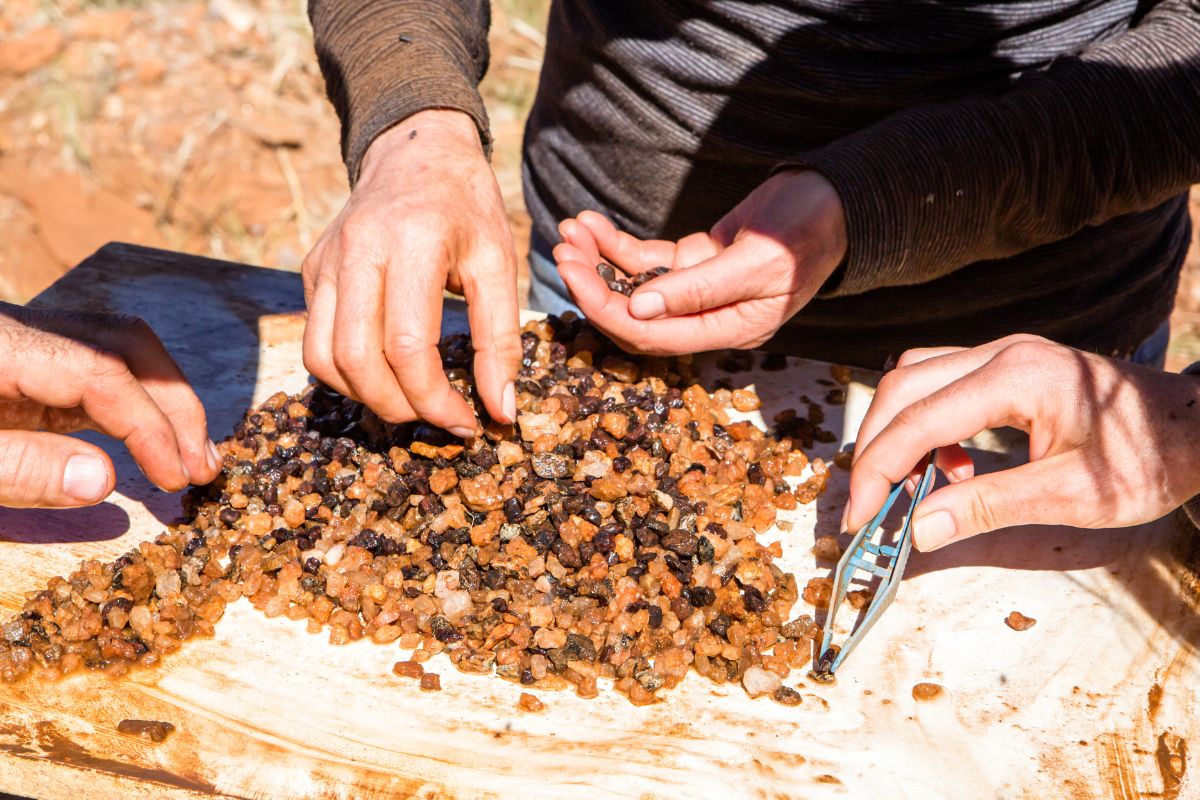
The opal is a unique mineraloid known for its iridescent qualities, and its value is greatly influenced by its geographical origin. I'm going to outline the notable regions where opal is mined and discuss how the geographical source impacts the gemstone's value.
Major Opal Mining Locations
- Australia: My country is renowned for producing the vast majority of the world's opals, among which the town of Coober Pedy is the largest supplier. Australian opals are prized for their brilliance and variety, particularly the black opal from Lightning Ridge.
- Ethiopia: This country has recently become a significant player in the opal market. Ethiopian opals, sourced mainly from the Wollo Province, are known for their striking play-of-color and are becoming increasingly sought after.
- Mexico: Fire opals with their warm body color are predominantly mined in Mexico, and they are unique due to their clear to translucent body which may or may not show play-of-color.
- Peru: Peru yields yet another variety—the Peruvian pink opal—which lacks the play-of-color but is desired for its beautiful pastel hues.
- Honduras: The opals from Honduras are often characterized by a matrix-type structure, where the opal is intimately mixed with the host rock.
Each of these locations contributes a distinctive touch to the opals obtained, thereby diversifying the market.
Opal Value by Region
- Australia: The black opal from Lightning Ridge is amongst the most valuable, with its dark body tone accentuating the vibrant color play. Another coveted Australian opal is the white opal predominantly found in South Australia.
- Ethiopia: Ethiopian opals have surged in value due to their unique patterns and color play.
- Mexico: Mexican fire opals are valued for their distinctive colors, and those displaying play-of-color can command higher prices.
The value of opals from locations like Oman, which is an upcoming source, still needs to be firmly established in the market. The mineraloid status of opal, combined with factors like its water content, also plays a role in its valuation and can vary significantly from one location to another.
Choosing an Opal
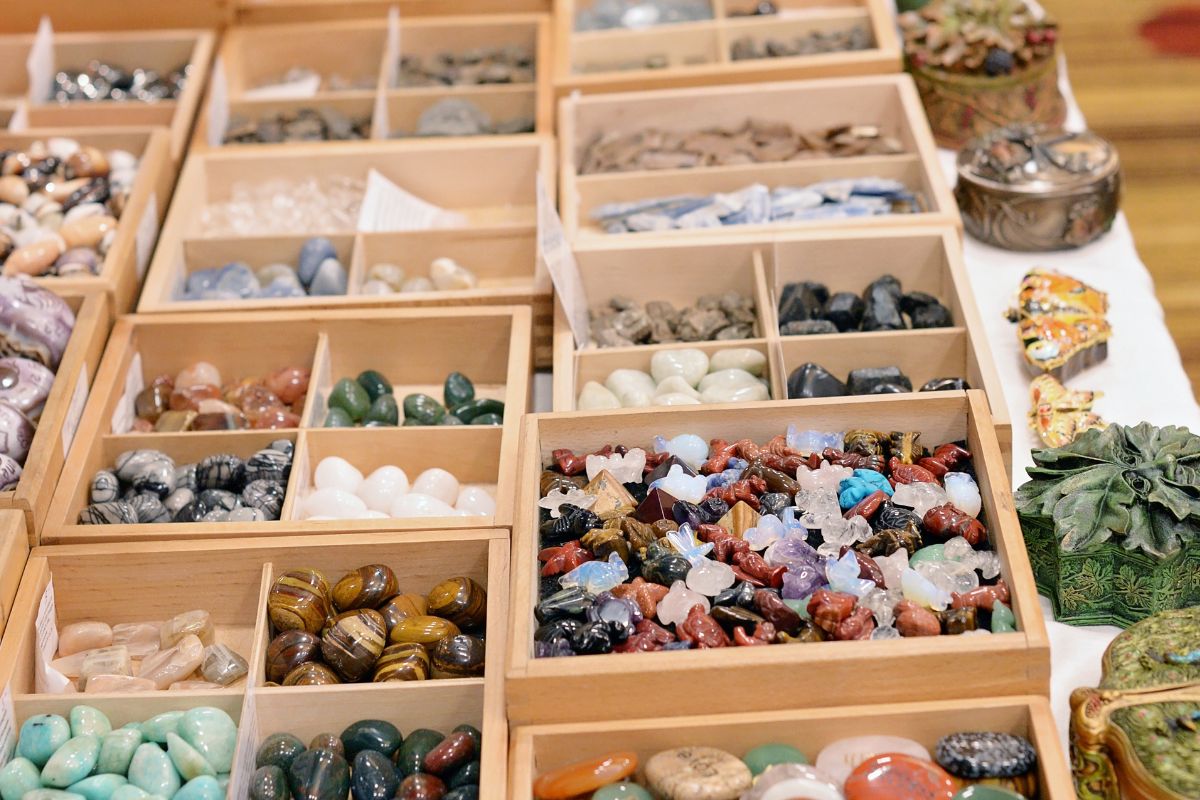
When I select an opal, my focus centers on its unique characteristics, the assurance of its quality and authenticity, as well as understanding its value, which is greatly influenced by color and pattern elements.
Selecting Quality and Authenticity
Quality: To assess an opal's quality, I look for the vibrancy of the play-of-color, which is the shimmer of rainbow colors that move with the light. High quality opals will have a clear and bright play-of-color across the entire surface. Transparency should be consistent, and patterns should be well-defined.
Authenticity: Ensuring an opal is genuine involves checking for natural patterns and ensuring its provenance. Unlike synthetic counterparts, natural opals present a unique pattern that's often irregular and varied across the spectrum.
- Checklist for Authenticity:
- Look for inconsistencies in the pattern—no two genuine opals are the same.
- Confirm transparency; natural opals should not be perfectly clear.
- Seek professional certification if available.
Understanding Value and Pricing
Value: My consideration of an opal’s value is predominantly based on its play-of-color and how it shows a full spectrum of colors. Opals with rare colors like red and black tend to command higher prices. The intensity and distribution of the color also significantly affect its value.
- Factors Influencing Price:
- Color: Red opals are more valuable than those with less vibrant colors.
- Pattern: Larger patterns like harlequin or ribbon patterns are priced higher.
- Size: Larger opals with impressive play-of-color are prized possessions.
Pricing: I recognize that the price of an opal is a reflection of its rarity and demand. High-quality opals with exceptional characteristics can fetch premium prices. However, I always compare prices from different reputable sellers to ensure I get a fair deal.
In summary, the choice of an opal should be approached with a critical eye for its color and pattern, a thorough evaluation of its authenticity, and a good understanding of its value. By taking the time to scrutinize these details, I can make a well-informed decision.
Also Read
Frequently Asked Questions
In this section, I'll address the common inquiries surrounding opal gemstones, with a focus on their spiritual, astrological, and purported healing benefits, especially for those born under the sign of Libra.
What are the perceived spiritual properties of opal gemstones?
Opals are often associated with inspiration, creativity, and artistry. Many believe that these gemstones can enhance imagination and help express one's true self.
How is opal believed to influence one's astrological outlook?
Astrologically, opal is thought to bring about loyalty and faithfulness while amplifying emotional states and releasing inhibitions. It is said to encourage both freedom and independence.
Which advantages are associated with wearing opal for individuals born under Libra?
For Librans, opal signifies hope and purity. It is believed to offer harmonic balance and to support the desire for lasting romantic connections and partnerships.
What are the purported healing benefits of opal gems?
Opal gems are credited with healing properties that may include strengthening the will to live and treating infections and fevers. Some claim they can purify blood and kidneys.
What special powers are opals said to possess?
Said to enhance cosmic consciousness and psychic vision, opals are also thought to heighten intuition, insight, and to ward off negative energies.
Who is said to benefit the most from wearing opal stones?
Individuals seeking emotional healing, as well as artists and creatives looking to spark their imagination, might find wearing opal stones especially beneficial. It’s also considered fortuitous for those born in October or under the zodiac sign of Libra.
Checkout some of our top collections:

